Donderdag 26 en vrijdag 27 november presenteerden we een projectposter en onze kaartproducten. We danken alle collega’s voor de interessante discussies!
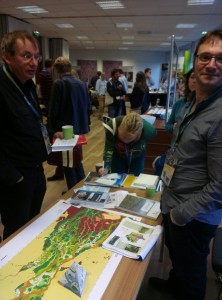
Tafeltje met kaartproducten met Kim Cohen
Donderdag 26 en vrijdag 27 november presenteerden we een projectposter en onze kaartproducten. We danken alle collega’s voor de interessante discussies!

Tafeltje met kaartproducten met Kim Cohen
At EGU 2016 (April 17-22) we organise the session:
CL1.07 Studying the climate of the last two millennia
This session highlights integrative paleoclimate research on the climate of the past 2000 years. We invite presentations that give an insight into data syntheses, quantitative temperature and hydroclimate reconstructions from local to global scales, novel approaches to producing multi-proxy climate field reconstructions, and contributions critically addressing non-climatic influences on proxies used in climate reconstructions. We also welcome abstracts on high-resolution ocean reconstructions (SSTs, salinity, ocean circulation) or integrating both marine and terrestrial data.
A particular temporal focus is set on the Dark Ages period. The Dark Ages refer to the timespan between the Late Roman period and High Middle Ages in Europe (AD 300-800). It is characterised by climatic deterioration and political instability during the transition from the classical to the medieval world.
This session also encourages participation of presentations of new external forcing reconstructions or assessment, and discussion of existing ones as well as analysis of transient climate simulations, model-data comparison, proxy system modeling, proxy-data assimilation, and detection-attribution assessments.
The session is co-sponsored by the PAGES 2k project (www.pages-igbp.org/ini/wg/2k-network/intro).
Conveners: Convener: Lucien von Gunten, Jürg Luterbacher, Anne Hormes, Fidel González-Rouco, Eduardo Zorita, W.Z. Hoek, Willem van der Bilt, Dana Riechelmann
On October 13th 2015 the third annual meeting of The Dark Age of the Lowlands in an interdisciplinary light project was held at the Regentenzaal in Utrecht. These meetings are intended to communicate results of the project and to receive feedback from a wide range of specialists from various disciplines; archaeologists, historians, palaeobotanists and physical geographers. During the morning session, three invited speakers presented their research; Dana Riechelmann (Mainz University) gave a review of climate proxy records from North-western Europe, Willem van der Bilt (Bergen University) presented a new climate record from Svalbard and Marieke van Dinter (Utrecht University) demonstrated her new results of the palaeogeographical development of the river Rhine around Utrecht. Then, the three PhD students in the project (Rowin van Lanen, Harm Jan Pierik, Marjolein Gouw-Bouman) presented their newest results on modelling route networks and persistence, landscape reconstructions and vegetation reconstructions for the Late Roman Period and the Early Middle Ages respectively. The afternoon session consisted of two workshops one on the landscape reconstructions and another on vegetation reconstructions in which the invitees were asked to their feedback both on the compiled maps and the followed methodology. This resulted in lively discussions and useful suggestions for the continued research within the project.
Time laps of the workshop (Hessel Woolderink)

Top: presentations during the symposium
Bottom: Leo Tebbens during the workshop ‘palaeogeographical maps’ and Timme Donders during the workshop ‘vegetation reconstructions’.
(Photos: Tim Schuring and Hessel Woolderink)
Dit najaar steken we kernen om een reconstructie van de vegetatie in Noord Nederland te kunnen maken. Ook zijn we op zoek naar stuifzand in een pingoruine bij Vledderveen.
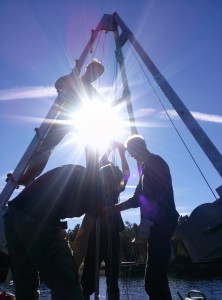
Boring vanaf het vlot in een pingoruine met Wim Hoek, Hans van Aken, Kees Nooren, Arjan van Eijk
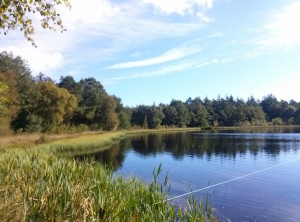
Pingo bij Vledderveen
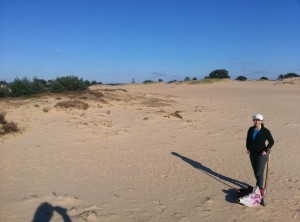
Aekingerzand
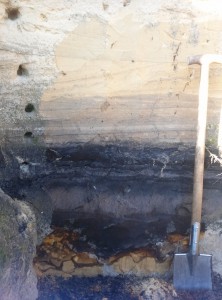
Profiel in het stuifzand van het Aekingerzand.
Welcome to our brand new website on the research project: The Dark Age of the Lowlands in an interdisciplinary light: people, landscape and climate in the Netherlands between AD 300 and 1000. Here you can find more (background) information on our research activities and products.
We willen graag weten wanneer de grote rivieren in het Nederlandse rivierengebied (Lek, Waal, Hollandse en Gelderse IJssel) zijn ontstaan. Om hier achter te komen nemen we monsters van veen of humeuze klei vlak onder de oudste klei van deze rivieren. Een impressie van enkele velddagen van het afgelopen voorjaar:
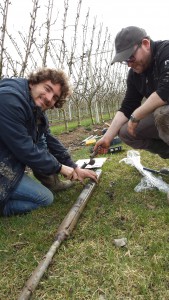
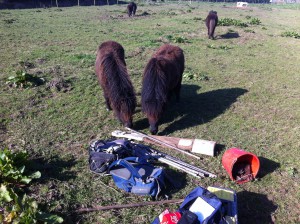
Sfeerimpressie bij Est
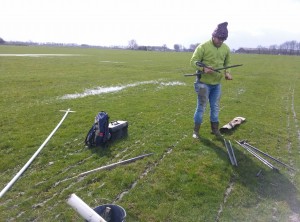
Boring bij Kampen, Tim Schuring monteert de boor (foto: Harm Jan Pierik)
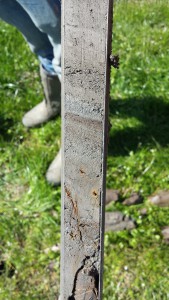
Klei in een restgeul bij Linschoten. De zandlaagjes en verslagen organische resten markeren overstromingen.
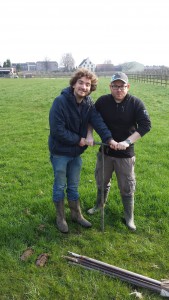
Harm Jan Pierik en Rowin van Lanen bij Dreumel (foto: Tim Schuring)
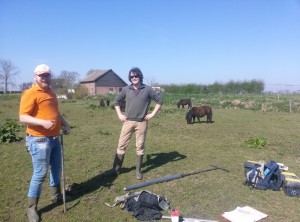
Tim Schuring en Hessel Woolderink in de restgeul bij Est
De Vroege Middeleeuwen in het Dommeldal bij Eindhoven.
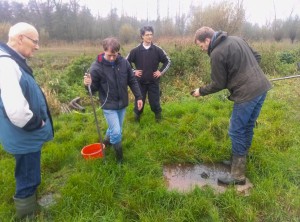
vlnr Jan Broertjes, Wim Hoek, Kees Nooren, Walter Schoenmakers
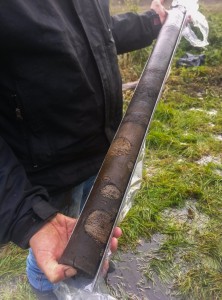
Boorkern uit het Dommeldal
The second symposium of the Dark Ages project was held at RCE in Amersfoort. We thank all guest speakers for their contribution and the audience for the fruitful discussion!
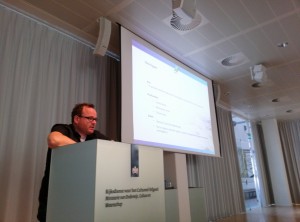
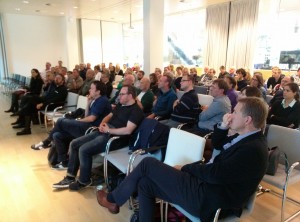
Op 15 juli kregen we de gelegenheid om enkele Vroeg-Middeleeuwse boomstammen op te halen die gevonden waren bij de werkzaamheden bij de dijkverlegging bij Zwolle. Om de context van de bomen in beeld te brengen zijn er ook handboringen verricht. We verwachten dat de monsters uit de boringen en de bomen ons een beter beeld gaan geven over de exacte ouderdom en ontstaanswijze van de Gelderse IJssel. Het item van RTV Oost
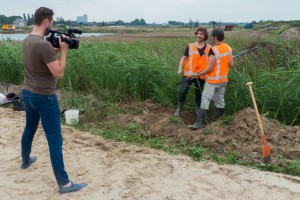
Visit of RTV Oost

Core sampling with the ‘Bohncke boor’
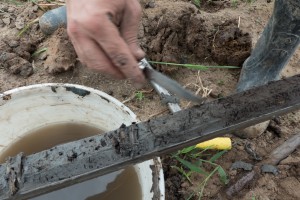
Clay of the Rivier IJssel on top of peat. (Photo HJ Pierik)

(photo: RJ van Lanen)
Een dag veldwerk om de oorspong van de Hollandse IJssel te vinden:
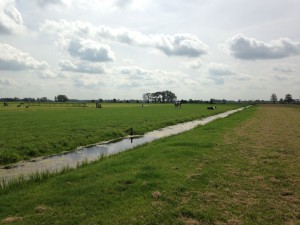
Landschap bij Oudewater (foto: Rowin van Lanen)
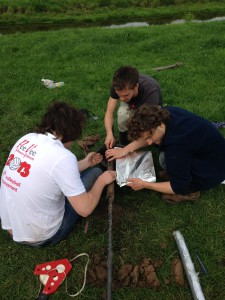
vlnr. Hessel Woolderink, Tim Winkels, Harm Jan Pierik (foto: Rowin van Lanen)